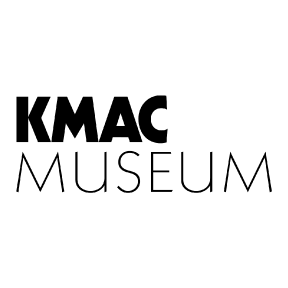︎ Quappi Projects, Louisville
All Things That Are, Are Light and Soot
From the title alone, one might anticipate that All Things That Are, Are Light and Soot at Quappi Projects is a philosophical and enigmatic exhibition. Artist Vanessa Albury’s work, however, is a rigorous, experimental, and, most importantly, accessible exploration of place and and its effect on memory. Albury has never lived in Louisville, yet her connections to the city run deep; William Rihn, her grandfather, owned a machine shop on Main Street while her Cherokee great-great-grandparents lived near Six Mile Island. By exposing cyanotypes through the windows of a Portland warehouse, Albury reaches out and creates connections: to location, to her family, and to the force of time that erodes not only humans, but the structures and buildings by which we remember them.The exhibition consists of eleven cyanotypes at various scales, ranging from small, framed prints on paper to enormous works on fabric that engulf entire corners of the gallery. With deep blue hues that contrast the white gallery walls, striking and consistent compositions, and intricate detail, Albury’s work immediately pulls the viewer in. Of the six exhibitions that have filled Quappi Projects since its opening last year, All Things That Are, Are Light and Soot utilizes space most effectively. Albury’s large-scale cyanotypes hang away from the wall and break up openness of the gallery, creating a more intimate experience and encouraging viewers to closely examine the work. Her smaller works such as Light and Soot XV (2018) and Light and Soot XI (2018) are curious in their indistinguishability and function almost like Abstract Expressionist paintings. Larger cyanotypes, however, are recognizable as a negative of window panes, with sunlight exposing sections blue while leaving the framework white. The resulting effect is reminiscent of Andy Warhol’s grids: each section, though they may seem to be identical at first glance, contains idiosyncrasies that invite us to take a closer look. Carefully detailing each crack, hole, and speck of dust on the window panes, the cyanotypes create a visual record of the building and preserve its present state. Photography has power over time—individual moments can be extracted from their temporal sequentiality and experienced in the future, even long after the subject has disappeared.
When viewing work that utilizes alternative and historic photographic processes, the viewer must contend with its connotations and relationship to the medium’s past. Albury draws connections to the historical uses of cyanotype while offering a contemporary perspective. The artist’s methodology recalls Anna Atkins, who used cyanotype photograms to depict botanical specimens and is remembered today as an influential artist who created the first book of photography. Through her reference to Atkins, Albury considers not only familial connections, but positions herself in a lineage of female photographers. Cyanotype is historically significant not only in Atkins’ example, but was used for blueprints as an affordable way to reproduce drawings before the advent of scanners. Contemporarily, “blueprint” has associations with any sort of architectural renderings. Albury’s photograms function as another type of blueprint—one that reveals not the underlying structure, but the actuality of the building she documents; viewers are able to envision the cracked and dirt-covered windows in all their particularities, even if the building is demolished. Though time inevitably erases all things, photography has the power to place its subject in stasis. Records of times past, whether they be in the form of family photographs or depictions of cracked windows, hold an inexplicable power over us.
All Things That Are, Are Light and Soot can be considered an abstract family photograph. Albury does not depict herself or her relatives in a traditional sense, but her work attempts to create and strengthen bonds to specific individuals and to a site of family history. Photography has always been closely tied to modern conceptualizations of family and, to paraphrase the French sociologist Pierre Bourdieu, the medium itself reifies its very notion. Still, photography cannot act as a replacement for memory itself; Albury’s cyanotypes function in tandem with memories of her grandfather and familial lore passed down from generation to generation. As Geoffrey Batchen argues, “Contrary to popular opinion, photography does not enhance memory—involuntary, physically embracing and immediate memory—but rather replaces it with images—images that are historical, coherent, informational.” As is addressed in the exhibition statement, the depicted building may no longer stand five or ten years from now. All Things That Are, Are Light and Soot speaks not only to personal and familial history, but to the ever-shifting nature of urban life.
Even though Albury’s work is deeply personal, there is much we can learn about time, memory, lineage, and even Louisville. Unkempt and forgotten buildings, such as the one the artist used, contain so much history. As the city evolves and these places are remodeled or demolished, we must contend with their past. Who lived or worked here? What memories were created here? What importance do they still hold? Through both medium and subject matter, Albury addresses the ephemerality of life. Her use of an antiquated form of image making reminds us that the past is ever-present: in historical records, in buildings, and in our minds.
-
All Things That Are, Are Light and Soot is on display at Quappi Projects through November 4.
Quappi Projects is located at 1520b Lytle Street, Louisville, KY 40203 and open by appointment only.
Notes:
-
Vanessa Albury
- Quappi Projects
- Batchen, Geoffrey. Forget Me Not: Photography and Remembrance. New York: Princeton Architectural Press, 2004.
- Bourdieu, Pierre. Photography: A Middle-brow Art. Translated by Shaun Whiteside. Stanford University Press, 1996.
Kevin Warth, Contributor to Ruckus
10.20.18







